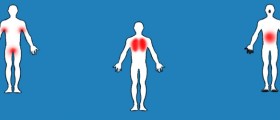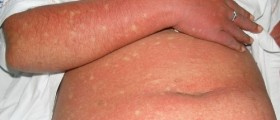
Bubonic plague is a serious infectious disease that used to kill millions of people in Europe in the Middle Ages. Today it rarely occurs in epidemics and can be easily cured. However, since sources of microorganisms responsible for the disease simple cannot be eliminated in underdeveloped parts of the world, some countries remain at risk for the disease.
This infections is caused by the bacterium Yersinia pestis. Once contracted the bacteria start to multiple and initiate all the symptoms and signs of the infections such as swelling and tenderness of lymph nodes, high fever accompanied by chills and headache. There may also be bleeding under the skin which is a cause of black skin discoloration. Because of this phenomenon bubonic plague used to be termed as black death.
Transmission of The Infection
Bubonic plague cannot be contracted from an infected individual. Quite contrary, the infection primary affects small rodents such as rats, mice and squirrels. Now, these animals are frequently infested with fleas. Fleas are, therefore, known as vectors which suck the blood of the infected animal and then may bite healthy humans allowing transmission of the bacteria. This is the most common way of transmission of bacteria responsible for bubonic plague.
During epidemics that took place in the Middle Ages people used to develop pneumonia from Yersinia pestis and the bacteria were spread by coughing and sneezing.
Are there New Bubonic Plague Outbreaks?
According to WHO each year around 1,000 to 3,000 people get infected with Yersinia pestis. There are, however, no reported cases in Australia or Europe. The areas where infection still may occur include Russia, the Middle East, China, Southwest and Southeast Asia, Madagascar, southern and eastern Africa as well as the Andes and Brazil.
As for the United States, there are around 10-15 new cases reported each year. In the majority of cases the disease occurs in northern New Mexico, northern Arizona and southern Colorado and sometimes in California, southern Oregon and western Nevada.
Treatment and Prevention
This infection is successfully treated with potent antibiotics such as streptomycin or tetracycline. Also, people who are traveling or need to work in countries that are still endemic when it comes to bubonic plague can be properly protected with a vaccine.
Other ways of prevention which are highly recommendable, especially for endemic countries, include controlling the rat population, watching for plague cases in both animals and humans in the area, using insecticides to eradicate or reduce the number of fleas and treating pets for fleas.

















Your thoughts on this
Loading...